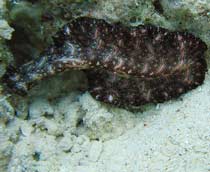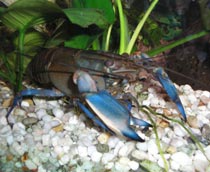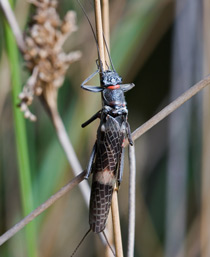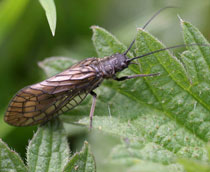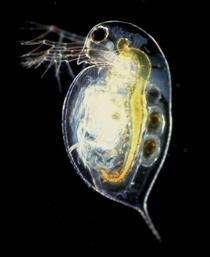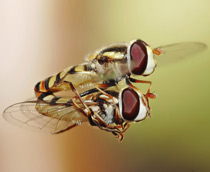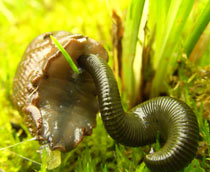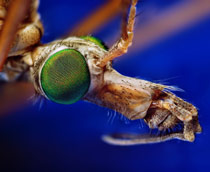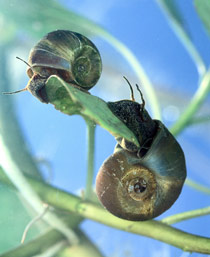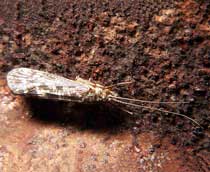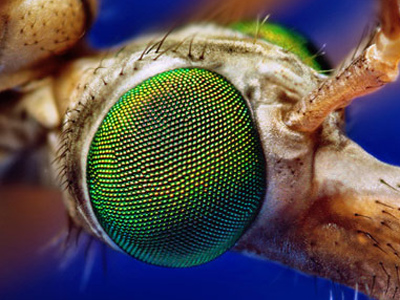
Rivers - Invertebrates
The term invertebrate refers to an informal collection of a very large number of animals. Inverterbrate means without a backbone. Amongst invertebrates are sponges, flatworms, molluscs, arthropods, insects and various worms. It is estimated that 97% of all species alive today are invertebrates. Insects are by far the most numerous. There are so many species of insects that scientists have yet to discover them all, let alone name or count them. Estimates of the total number of insect fall in the range of 1 to 30 million!
In this quiz, we have chosen 10 invertebrates that live in or around freshwater rivers, streams, lakes and ponds. If you wish to get a closer look at the creatures, just click on the photo to enlarge it.
- Do not have internal body cavities.
- Over half of the species are parasitic.
- Has been used successfully in some countries to control populations of imported giant African snails.
- Are bilaterally symmetrical creatures, which means their left and right sides are mirror images of each other.
- A New Zealand species thought to have reached Europe in plant containers is causing concern as it preys on earthworms.
- Order: Decapoda
- Suborder: Pleocyemata
- Infraorder: Astacidea
- Superfamily: Astacoidea
- Related to the lobster.
- The study of crayfish is called astacology.
- Are found near enough worldwide.
- Louisiana supplies 98% of the crayfish harvested in the USA.
- Subclass: Pterygota
- Infraclass: Neoptera
- Superorder: Exopterygota
- Order: Plecoptera
- Found throughout the world except Antarctica.
- Prefer to live in areas with running water.
- Intolerant of water pollution, so their presence is an indicator of good water quality.
- Females carry thousand of eggs in a ball which they carry on their abdomen at first and later deposit into the water.
- The nymphs physically resemble wingless adults, but often have external gills which may be present on almost any part of the body.
- Order: Megaloptera
- Family: Sialidae
- The larvae are aquatic, active, armed with strong sharp mandibles, and breathe by means of seven pairs of abdominal branchial filaments.
- It takes between one and two years to become full sized, whereupon they leave the water until metamorphosis into the sexually mature insect.
- Adults stay near to the water, in which they had lived in when they were younger.
- Class: Branchiopoda
- Subclass: Phyllopoda
- Order: Cladocera
- Widespread and common in inland aquatic habitats.
- A tiny creature between 0.2 - 6 mm long.
- Its head is turned downwards and it has a single black eye.
- The head has two pairs of antennae, the second longer pair are used for swimming.
- Order: Diptera
- Superfamily: Syrphoidea
- Family: Syrphidae
- Found on all continents except Antarctica.
- Harmless to most animals.
- Many species of the larvae prey on pest insects including aphids and leafhoppers.
- Because of this, gardeners will use plants to attract the species.
- They have two suckers, one at each end of the animal.
- Historically, have been used in medicine to remove blood from patients.
- Leeching can be traced to Ancient India and Greece and has continued well into the 18th and 19th centuries in Europe.
- The use of leeches in modern medicine made its comeback in the 1980s after years of decline, with the advent of microsurgery such as plastic and reconstructive surgeries.
- Order: Diptera
- Family: Tipulidae
- The larvae are called leatherjackets.
- In 1935, Lord's Cricket Ground in London was affected by leatherjackets: several thousand were collected by ground staff and burned, because they caused bald patches on the wicket and the pitch took unaccustomed spin for much of the season.
- Also known as daddy long-legs.
- A freshwater snail is a gastropod, of which there are approximately 4,000 species!
- Most freshwater gastropods have a shell, however there are a few exceptions.
- Some snails breathe using gills, but others need to surface to breathe air.
- Several species are eaten in Asian cuisine.
- Can live happily with tropical fish in aquariums.
- Through archeological research in Guatemala, it has been revealed that freshwater snails were part of the diet of the Maya civilisation.
- Class: Insecta
- Superorder: Amphiesmenoptera
- Order: Trichoptera
- Fossils have been found in rocks dating back to the Triassic period
- At the larvae stage, they build their structures underwater using silk.
- Have a preference for clean water.
- The adult stage is generally short-lived, anything from one week to two months.
- Adults are equipped predominantly to mate, and don't eat.
Ready for more?
not all...
quizzers. Try to win a coveted spot on our Hall of Fame Page.





